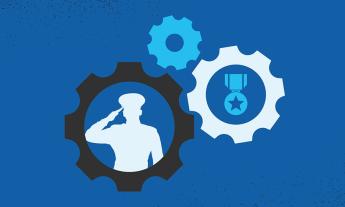Empowering agencies and communities through transparency
Background
The federal government grants an estimated $750 billion per year to many initiatives that serve the public and the economy. Programs like the American Rescue Plan, or ARP, raise that number to close to $1.4 trillion. These dollars fund everything from Medicare and Medicaid to school lunch programs to housing to research and development at universities. The federal government not only funds these programs, but also provides oversight on how these funds are spent.
The Federal Audit Clearinghouse , known as FAC, is a critical part of this oversight pipeline. Grantees submit their audits of how they used federal dollars to the FAC, and agencies can then review those audits to ensure accuracy, identify accounting problems, manage costs, and make more effective decisions in the future. The existence of FAC is mandated by law, and is defined by the Single Audit Act as well as the Code of Federal Regulations (2 CFR Part 200 Subpart F).
The Census Bureau operated the FAC for nearly two decades. Management of the FAC transitioned to us in the fall of 2023, bringing a user-centered approach to how users experience the oversight process. This ARP investment assisted us in the first step toward improving the customer experience and aligning with Executive Order 14058, Transforming Federal Customer Experience and Service Delivery.
Challenge
Submissions to the FAC cover a wide range of award sizes and involve a complex data collection process. As an example, the Gulf of Maine Research Institute submitted an audit covering approximately 60 different federal awards. Meanwhile, a state or large university might have thousands of awards to track and report on every year.
Additionally, the FAC was created and built in an era that made it difficult to respond to modern data and oversight needs across agencies and the public. We took on the challenge of updating how information was gathered and shared, while making sure the existing audit process continued throughout the year.
Solution
Our team managed the transition to minimize disruption to auditors, auditees, and the federal government, while also setting the stage for significant improvements to the system and user experience. The team was drawn from a mix of existing 10x staff as well as talent from 18F, Presidential Innovation Fellows, and other partners. This organization-wide effort made it possible for us to handle the transition smoothly.
We rewrote the FAC, reducing the lines of code in the system by a factor of 20, while maintaining all critical performance and making it easier to maintain moving forward. We put data validations into place for the entire collection and formed connections to SAM.gov to improve data accuracy from previous years. The search feature was re-envisioned with federal partners, providing a pathway to greater insight for oversight. Additionally, a modern API provides timely, targeted access to data for agencies and the public alike.
Impact
The new FAC launched ahead of its Oct. 2 transition deadline and rapidly reached approximately 1,000 audit submissions per week. Built on free and open source tools, all of its project boards, code, and documentation are freely available as a product of the federal government. Our new Clearinghouse provides:
With more than 40,000 audits conducted every year, the FAC is used by more than 100 agencies and tens of thousands of public users. Our enhancement of the FAC allows audit resolution and grants officials to better understand how agencies prioritize and distribute funding. Most importantly, it allows members of the public to see how awardees are spending their funds and connect those investments back to their own communities.
Helping the public navigate life experiences through text messaging
Background
With a mission to simplify the public experience of navigating government programs that help low-income individuals and families, the Public Benefits Studio used ARP funding to launch a pilot text messaging platform called Notify.gov (beta) to better enable agencies to reach people where they are.
As an exemplary display of Technology Transformation Services’ cross-collaboration, Notify.gov advanced from 10x in FY 2022 to a longer-term home at the Public Benefits Studio, where the Studio team has continued improving the product and recruiting pilot partners. In fact, Notify.gov builds on successful programs other government agencies led, including the U.S. Veterans Affairs’ VANotify program and the United Kingdom’s GOV.UK Notify program.
Now, the Studio is working with pilot partners administering federally funded programs in the City of Norfolk in Virginia, Montgomery County in Maryland, the states of Wisconsin, Washington, and Arizona, and the U.S. State Department’s Bureau of Consular Affairs. The Studio team is using text messages to better deliver government services and reach the communities they serve.
Challenge
Many government agencies still rely on paper mail as their primary communication with the public. But mail can get lost or delayed, and many people do not keep the same address, especially those eligible for public benefits like food assistance and public health insurance. And in these cases especially, a missed deadline or required interview could mean a person discovering they no longer have health insurance once they’re already at the doctor’s office, or that they cannot pay for their groceries with their EBT card once they’re already at the register.
Despite compelling evidence from past government texting pilots about the efficacy of texting, the number of benefits programs using text messaging to reach the public is still surprisingly low, with agencies citing the high operational cost of procurement and limited in-house technical capacity as key barriers to adopting existing texting tools.
Solution
Notify.gov aims to be a solution for government agencies that will help them meet the public where they are. Research shows that 97% of U.S. adults with an annual income of less than $30,000 have a cellphone, making texting an ideal alternate option to reach members of the public aside from the mail. In fact, some previous government pilots saw a 20% to 50% increase in case maintenance and cross-program enrollment when programs used texts, emails, and phone calls, in addition to regular mail.
Notify.gov makes it easy for partners to onboard without any technical integration required. The Studio team also offers best practice guides and templates to help partners ensure message quality, build trust with message recipients, and measure the impact of campaigns.
Impact
The City of Norfolk partnered with the Studio to pilot Notify.gov and send easy-to-understand reminders to Medicaid/CHIP beneficiaries. In mid-November 2023, Norfolk sent their first 1,300 text messages to Medicaid recipients who had not yet completed their renewal with a reminder that their health coverage was ending on November 30. In a follow-up with a small sample of recipients, several respondents directly attributed the text messages for prompting them to take action on their renewals.
As the Public Benefits Studio team learns more about what agency partners need to effectively send text messages, the team is improving the tool and measuring program outcomes. This data will inform if and how Notify.gov expands to additional programs in the future.
Helping veterans collaborate using cloud services
Background
ARP investments assisted us in accelerating security assessments so that federal agencies can deliver services to the public more quickly, aligning with the Executive Order on Improving the Nation’s Cybersecurity. The Federal Risk and Authorization Management Program, or FedRAMP®, empowers agencies to use modern cloud technologies, with an emphasis on security and protection of federal information. FedRAMP aims to streamline its program, cutting down time, costs, and effort for federal agencies adopting cloud technologies. This helps deliver secure public services more quickly while maintaining the delicate balance between security and efficiency.
Challenge
Agencies face hurdles when trying to adopt cloud technologies since they must undergo rigorous and extensive security assessments. A FedRAMP authorization helps provide a standardized approach to security assessment, authorization, and continuous monitoring. Historically there have been two approaches to obtaining a FedRAMP authorization — either through a Joint Authorization Board review or by an agency’s own IT security process. Either method can often take months or even years to complete the significant and sometimes extensive review process. ARP investment has supported FedRAMP in continuously refining the process by which secure cloud services are assessed and available for agency use.
Solution
The FedRAMP team collaborates closely with industry and cloud security experts across public, private, and government sectors. This collaboration provides a standardized approach to security assessment, authorization, and continuous monitoring for cloud products and services. For example, the FedRAMP team worked with the VA to build guidance for cloud service providers to define and formalize the requirements for the different components that touch federal data. This way all stakeholders can align on what is needed to ensure an effective FedRAMP process.
Impact
Using ARP funding to bolster the team, FedRAMP drove the authorization of a content cloud platform, called Box, from a “moderate” to “high” impact level. Through FedRAMP’s reuse process, the VA was able to issue a high authority to operate to use Box in under five months. Though the typical authority to operate, or ATO, testing is often a lengthy procedure, FedRAMP’s reuse process cleared a path for the VA’s ability to use the solution for highly sensitive data, such as personally identifiable information, sensitive patient records, financial data, law enforcement data, and other controlled unclassified information. As a result, veterans can now collaborate using Box as a safe and secure platform for veteran research studies instead of having to rely on email or physical mail.
By embracing FedRAMP, the VA minimized duplicative efforts, leveraged transparent standards, and accelerated their cloud adoption, leading to the opportunity for veterans to engage securely. In fact, VA has used this FedRAMP-authorized product to support 146 different VA offices and approximately 1,400 users.
Ensuring that federal agencies like VA have access to best-in-class, cloud native solutions will help drive critical administration priorities — including workforce modernization, improved customer service delivery, and stronger cybersecurity efforts to continue to protect our nation’s security.
Enhancing the public experience and simplifying access
Background
In today’s digital age, federal agencies face a growing need for greater and simpler access to information. ARP’s investment in Search.gov aims to meet people where they are, increasing engagement, and simplifying the navigation process. The Search.gov team researched and implemented improvements to its search engine built by and for the federal government, leading to more refined search results, support for additional types of websites, and more advanced analytics to improve the public experience.
Challenge
To build a valuable experience, it is critical to see how website visitors engage with content. Traditional content management leaves agencies relying on “best guess” approaches that do not take user needs into account. This leads to agencies using valuable resources and time answering the same questions.
With an understanding of what someone is looking for on the site, agencies can design ahead of needs and easily provide the right answers. This requires a system that makes set-up and maintenance easy and shows how the user interacts with the content.
Solution
That system is Search.gov. Search.gov streamlines content management and search processes through multi-platform search, looking across agencies and websites, and summarizing results in one simple view. Search.gov also allows agencies to customize the content and search experience to its users over time to improve upon user preferences, search patterns, and other needs to better serve the public. By using Search.gov, agencies can achieve the best of both worlds: efficient processes for agencies and enhanced search for the public.
In a key partnership, Search.gov supported SSA.gov to enhance search engine optimization and accessibility to Social Security Administration benefits. SSA prioritized user needs and compiled feedback over nine months in 75 sessions and 100 interviews. Upon revamping the site architecture and refining content, the navigation experience is not only quicker and more direct at SSA.gov, the search experience is more effective too. People clicked on search results more often, which indicates that it’s easier for people to identify what resources are most useful after they have run a search.
Impact
Search.gov supports over 300 million searches a year for about 2,200 websites, across one-third of federal domains. The team continues to expand its capabilities to design easier experiences for the public. With a feature called “faceted search,” users can now filter and narrow their results for the most relevant and valuable information. Paired with the latest web developments, Search.gov even allows agencies to more easily and quickly set up and maintain new sites. Thanks to ARP investment in Search.gov, the public can more efficiently access crucial information where and when they need it most.
Making government services more equitable
Background
As agencies continue to transition to newer technologies like AI and streamline the experience for users, they must develop strategies to better understand and mitigate the risk of technology treating some populations of users different than others, and create safeguards against inequitable outcomes that could harm users, and especially disadvantaged populations. In 2022, we released our Equity Action Plan, and updated it in 2023, in response to the Executive Order On Advancing Racial Equity and Support for Underserved Communities Through the Federal Government.
That plan identified a high-priority barrier: algorithmic discrimination in facial matching products. We work to ensure that government websites and technology deliver fair and accurate outcomes to all communities of users. To achieve this, we used ARP funding to conduct a study to understand and assess potential biases within identity verification and improve the experience across communities.
Challenge
Government agencies, financial institutions, and other organizations often require people to prove their identity before granting access to their services. Traditionally organizations would take a hard copy of items — like a driver’s license or passport — while a person is physically present to confirm their identity. However it’s not always feasible or practical to require everyone to appear in person. Agencies and the public have increasingly requested online solutions for identity proofing. While this provides convenience and greater access, remote identity proofing must be implemented with caution to safeguard against potential biases. With this growing public and agency demand to transition to the latest digital services, we are committed to drive equitable design practices.
Solution
We created the GSA Equity Study on Remote Identity Proofing to identify and address potential biases in facial matching and other methods used to verify identities remotely. In this study, we recruited a demographically diverse pool of 4,000 participants to test remote identity-proofing software. This software tries to determine if two images belong to the same person by comparing a state or territory government-issued identification with a selfie. We are also testing non-biometric approaches to remote identity-proofing, like verifying phone-account ownership and examining participant history records.
Impact
This past year, we have welcomed participation from thousands of individuals from diverse backgrounds and representative of identity proofing user populations. The study is setting the scientifically rigorous groundwork to uncover potential biases and areas for improvement so this technology works better for everyone. The peer-reviewed report will present a statistical analysis of the performance of proofing checks, like facial verification, across a number of sociodemographic factors and explore the causes behind any negative or inconclusive results.
We will use the results of this study, in combination with findings from other federal agency efforts, to establish recommendations and inform future product iterations, including on Login.gov. The results from this study will pave the way for a more inclusive future, and help ensure fair and equal access to government services for every community.
Highly skilled talent that shapes lives
Background
ARP invested in TTS fellowship programs, such as the Presidential Innovation Fellows, or PIF for short, and the U.S. Digital Corps, as fundamental ways to build a tech talent pipeline for entry-level to senior technologists at all levels of government. Having tech talent embedded within agencies helps ensure a clear understanding of the public’s needs and more effective execution of digital initiatives. These technical experts support and advise on a wide range of projects across many impact areas, including economic recovery, equity, customer experience, and public health.
Addressing unsheltered homelessness together
To address the pressing issue of homelessness, the United States Interagency Council on Homelessness, Domestic Policy Council, and several federal agencies came together to create the Federal Strategic Plan. Recognizing the need for direct federal support, they identified seven jurisdictions with unusually high unsheltered homeless populations that needed direct federal aid.
To ensure effective implementation and timely support, the Domestic Policy Council, or DPC, joined forces with the PIF program. Through this partnership, a PIF expert managed the coordination between jurisdictions and 19 federal agencies and navigated policy issues along the way. Working hand in hand with DPC, they identified additional data sources to establish qualitative and quantitative metrics. In doing so, the PIF helped measure the reduction of each jurisdiction’s unsheltered homeless population. This prioritized resources to the communities that needed them most towards lasting and sustainable change.
“We have to be looked at as partners. Not to be looked down on or dismissed, but to be considered the experts on our own bodies — because we are.”
— Imani, interior designer, sister, and person with long COVID
Exploring solutions through human-centered research
A USDC design fellow supported the creation of the Health+ Long COVID report [PDF], highlighting the experiences of people with long COVID and defining solutions. The fellow helped lead a research team that completed over 1,000 hours of interviews and four workshops, all designed to listen and learn from people who are or were affected by Long COVID, caregivers, and practitioners. The Health+ Long COVID work enhances interagency efforts on long COVID. As a result, a greater understanding increases awareness and recognition of other chronic illnesses associated with prior infectious disease. This Health+ Long COVID research, and the tools and insights it provides, helps improve patient outcomes to improve health equity for all.
Cross-agency collaboration delivering and re-delivering results
Background
10x supports projects that help the government reimagine ways to better understand and respond to the priorities and needs of the public. Using ARP funding, the 10x team reimagined how the government approaches user research, public benefits, and security assessments, collaborating with other agencies to maximize impact.
Simplifying access to public benefits at USA.gov
10x contributed to the roadmap for a redesigned USA.gov website that aimed to serve as a centralized, digital “Federal Front Door” from which customers could navigate to all government benefits, services, and programs. 10x’s research and recommendations summarized information across benefits websites to align content, processes, and technologies to public needs. As another example of simplifying the experience, 10x also supported USA.gov with the benefits locator tool to consider unique life experiences and help humanize benefits eligibility. This tool focused less on search intentions and more on everyday challenges people face, such as coping with the loss of a dear one, transitioning into retirement, coping with disabilities, and more.
Designing for the future to save time and costs
10x collaborated with FedRAMP to make the process of checking and approving the security of cloud platforms faster. Together they used a method called robotic process automation, which uses software to perform basic tasks automatically. 10x considered different approaches, such as machine learning, but decided that the best approach included rules-based automation to check security controls (called OSCAL). With this approach, the power of automation ensures that these critical security controls can be swiftly evaluated and approved, transforming more than 300 security checks into machine-readable code. This effort led to FedRAMP’s adoption of an OSCAL-based Security System Plan for the first time, streamlining operations and saving significant time and costs.
Impact
These key projects have the potential to spark transformative changes and drastically improve the way the public interacts with government services. 10x continues to put ARP funds to work to explore, evaluate, and innovate intentionally, even reaching across agency boundaries to deliver value to the public.

 U.S. General Services Administration
U.S. General Services Administration






